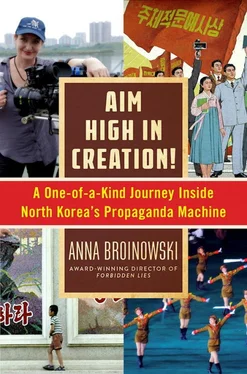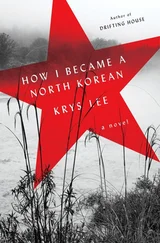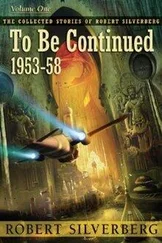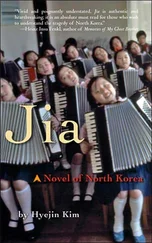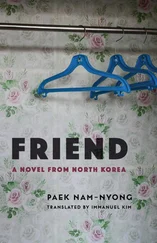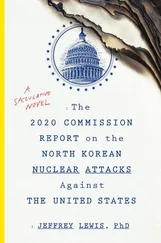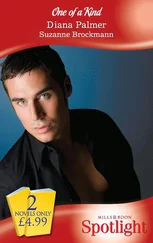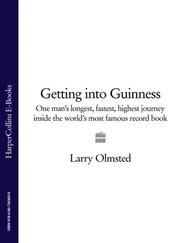I move on to a spiral staircase and descend into an underworld of vice. A bank of poker machines lines the wall, facing a floor-to-ceiling photo of Pyongyang, circa 1971. It’s like looking at New York without the Twin Towers: the trademark Juche Tower, with its glittering flame, is disconcertingly absent. Kim Jong Il built the tower in 1987, at his virile, propaganda-producing peak. He followed it up in 1992 with the soaring Yangakkdo. It is a myth that North Korea is completely off limits to the rest of the world: for Chinese tourists and properly accredited foreign entrepreneurs, it’s always been open for business. Kim designed the Yangakkdo as a honey trap for Beijing holiday-makers on a budget. His goal is reflected by a gaudy sign hanging under a disco ball next to the pokies: Good Luck Casino. North Korea’s tourist invasion won’t start for another two months, when the weather cools down. But trade is booming: the Chinese developer I met in the lift last night is tearing down the Yangakkdo’s putt-putt range to build a brand new casino, bigger than Caesars Palace.
I snap some selfies beside the casino sign, to prove to folks back home that the lust for filthy lucre is alive and well in Pyongyang. Then I walk over to what looks like another restaurant. Surprisingly, these doors swing wide open—and I enter a low room, done up like a Hawaiian cocktail joint. Two girls in LaCroix T-shirts lounge at a well-stocked bar, drinking Coke. One of them is playing Candy Crush on her tablet; the other is watching a Chinese dating show on TV. I could be back with Monica in Seoul, in some neon-lit dive in Itaewon. The girls glance indifferently at my camera and return to their screens. I suddenly feel horribly homesick. I want to pull up a stool and drink pina coladas with them. I want to play Candy Crush, check my Facebook, and see what Lady Gaga wore to the Emmys. It may be breakfast over here, but my jet-lagged body is clocking midnight.
“Good morning, tongmu ,” I say to the girls. Before they can answer, a middle-aged Chinese man in a towel pads out from behind a screen at the back of the room. A girl in a Minnie Mouse tank top and tight denim shorts follows. He leaves without a word, and she walks to the cash register to place some grimy yuan inside. I don’t need to read the kanji signs on the wall to know that one of them, for sure, guarantees a happy ending.
BACK OUT IN PYONGYANG’S SIN-FREE STREETS, it’s rush hour. Our driver toots aggressively, pushing through swarms of bicyclists and pedestrians to get to Ms. K’s first stop for the day. Riding in air-conditioned comfort as sweaty commuters scurry out of the way brings back uncomfortable memories of my chauffeur-driven childhood in the Philippines and Myanmar. But there is a difference: in Pyongyang, the people are not servile or cowed. They are annoyed. They are showing us the same disdain the Iranians used to show my mother and me when we put on Chadoors and braved Tehran’s traffic to get to the bazaar. To the North Koreans, we’re not cashed-up tourists, but the despicable exploiters of an enemy state.
We stop at an intersection, and people in colour-coded uniforms cross the road, looking like extras from Gattaca. The scene is perfectly designed, a neatly delineated hierarchy of roles that reminds me of the Pentagon corridors I’ve filmed inside, where each officer wears a colour specific to his status. In Pyongyang, the soldiers wear khaki, the labourers brown, and the Party officials grey or black. A petite woman stands inside a chalk circle in the middle of the intersection in a buckled blue dress and high-heeled boots. She points a baton in swift, graceful movements, conducting the traffic. The thin chalk line is the only thing between her and the army trucks thundering around her, missing her by inches.
Much has been made of Pyongyang’s traffic ladies: critics say the regime uses them to save electricity. But I think they perform another function. They are as mesmerising as ballet dancers; their elegant choreography makes you feel instantly calm. Thanks to the traffic lady, Pyongyang has no road rage. Peep! goes the traffic lady’s whistle, and we jolt forward. She has the vermilion lipstick and arched eyebrows of one of Sunmo’s World War II starlets. Just before I left Beijing, a report went viral about a North Korean traffic lady who had been executed for sneezing on the job. She was shown in what appeared to be a Pyongyang courtroom, crying like a baby. Now I’m actually here, I still have no idea if the report was fake or real.
My inability to separate reality from fiction continues once we stop at the sweeping lawns of Mangyongdae, the birthplace of North Korea’s founding father, Kim Il Sung. A tour guide in a hanbok and Madonna mic floats up and starts a monologue about Kim Senior’s childhood, pointing at a gleaming hut: “Here, in this humble home, the Great Leader learnt the hard working conditions of the Korean people, and made up his mind to build a new country, free from pain.” The hut looks like it was built yesterday. I feel like the knight in Monty Python and the Holy Grail when King Arthur’s posse arrive at Camelot: “Camelot!” says Arthur reverently, and the knight growls: “It’s only a model.” The guide points at a crumpled terracotta pot, preserved from the day Kim Il Sung’s grandma went to the market and discovered she was too poor to buy a proper one. The pot, the hut, and the tools inside it are all oddly spotless. “Is it real?” I blurt out. The guide stops mid-sentence and blinks rapidly, as if there’s a glitch in her programming. Then she rearranges her face into a rigid smile: “Yes, this is original site.”
We walk back to the van, passing groups of women squatting in the grass, clipping it with scissors. They carefully place the green blades in flat straw baskets. Soothing music pipes from speakers hidden under the bushes, but that doesn’t hide the horrific possibility that these women are collecting the grass for food. The lawn is already perfectly manicured; what else could they be doing? “It is to feed the rabbits,” says Ms. K simply.
Best Recipes of Pyongyang doesn’t contain a single recipe for rabbits. I surreptitiously press the record button on my camera, feeling like every other journalist who has snatched illicit footage for proof of starvation. “What rabbits?” I ask Ms. K, trying to distract her from what my hands are doing.
“ The rabbits,” says Nick loudly. It’s not clear if he’s using our code word, or if he just thinks I’ve got a hearing problem. Either way, subject closed.
Hunched in the back of the van, I hide my camera under the scarf and keep on rolling. I’m not enjoying the double game I’m playing. On the one hand, I have to behave so that we’re invited back. On the other, I’m in a country where yes means maybe and maybe means no. So far, when we’ve raised the subject of trip two, Ms. K hasn’t even offered a maybe. And the images flashing past my window are too extraordinary to miss. Every frame counts if I’m not coming back. We cross the Taedong River, and I angle the lens down to the water. Canoes and iron barges move slowly up and down its glassy surface. Astonishingly futuristic skyscrapers rise up on the left bank, facing the Juche Tower on the right. Further up the river is the huge dome of the May Day Stadium, where the Arirang mass games are held every year—the ones the children we saw yesterday were practising for. At this distance, the stadium looks like a concrete crème brûlée.
The van pulls up at the Hana Music Information Center, a marble trapezoid bizarrely resembling Darth Vader’s helmet. Inside is a stunning woman with dewy skin and almond eyes. The minute she sees us, she wells up with tears: “Our Dear Leader Kim Jong Il visited us here on December 11, 2011,” she says. “We were the last people to see him alive.” I’m not sure if Ms. K realises that in taking us here, she’s giving us a worldwide scoop. When Kim died eight months ago, the BBC ran grainy footage of North Koreans crying at a Pyongyang escalator, claiming it was the last place the Dear Leader had been seen in public—but it seems the BBC was wrong.
Читать дальше
